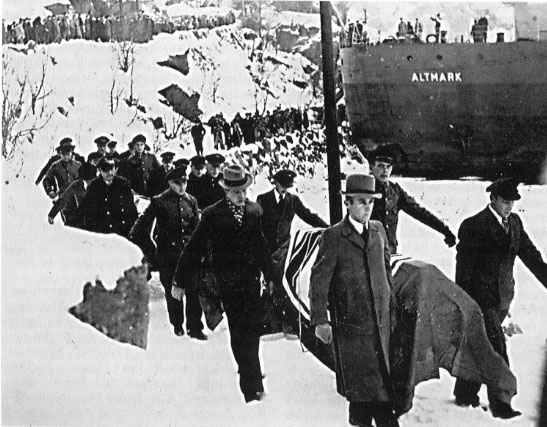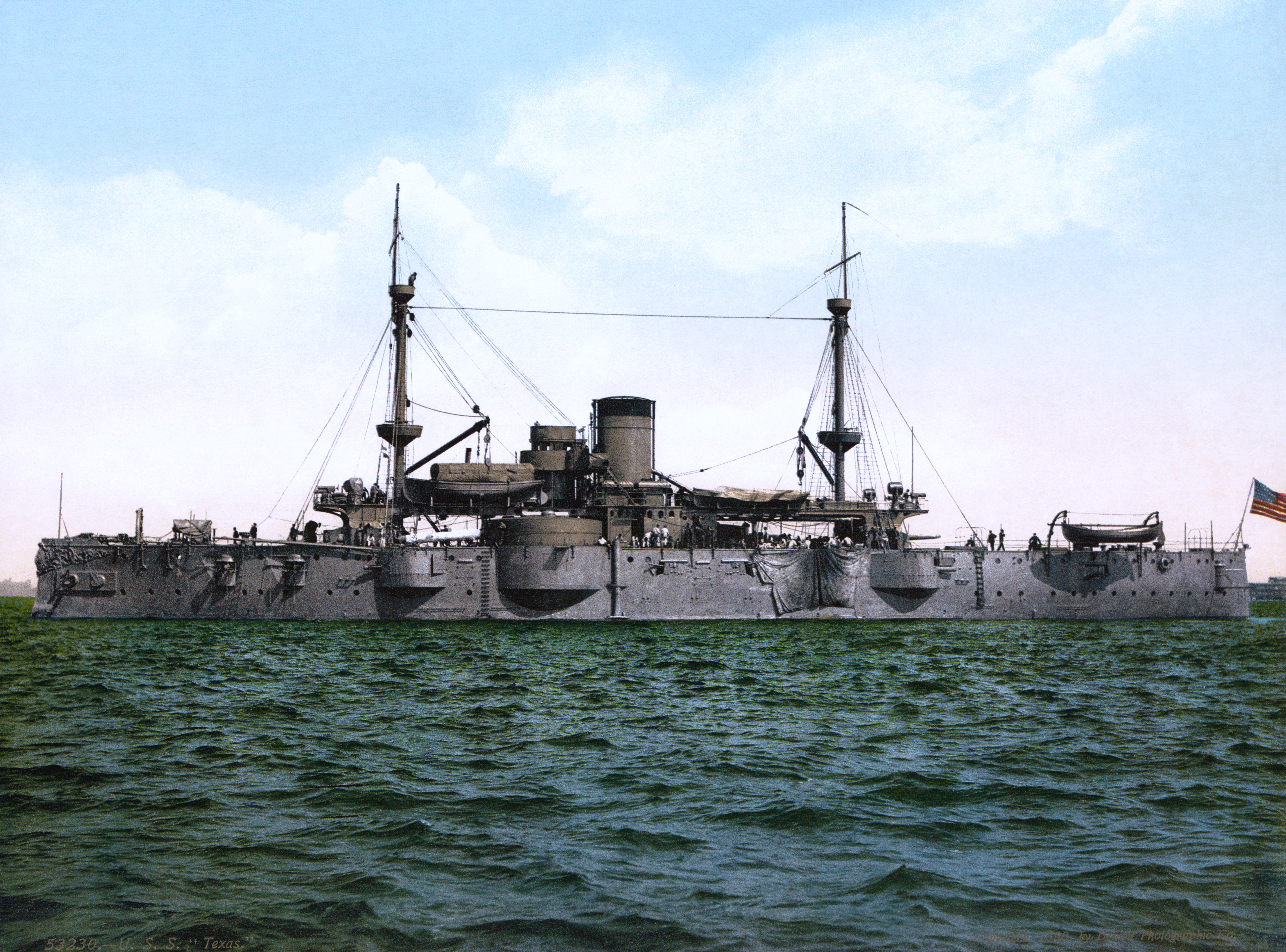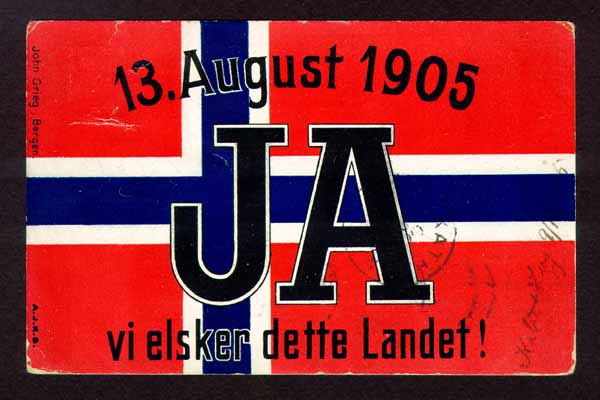|
Tordenskjold Class Coastal Defence Ship
The ''Tordenskjold'' class of coastal defence ships was ordered by Norway as part as the general rearmament in the time leading up to the events in 1905 - when Norway broke out of the union with Sweden - the two ships in the class ( and ) remained the backbone (alongside the slightly newer ) of the Royal Norwegian Navy until they were considered 'unfit for war' in the mid-1930s. Description Designed and built as typical pre-dreadnought battleships, although on a scale more suited to the fjords and narrow waters of Norway, the ''Tordenskjold'' class carried guns in a wide range of calibers: * Two 21 cm/45 (8.2 inch) guns in turrets fore and aft as the main armament. * Six 12 cm/45 (4.7 inch), mounted three on each side in a central battery, as the secondary armament. * Six 7.6 cm/40 (3 inch) guns, also mounted in the central battery, as the tertiary armament. * Six 1-pdr Quick Fire guns. These were meant to be used against torpedo boats. The ''Tordenskjold'' class ... [...More Info...] [...Related Items...] OR: [Wikipedia] [Google] [Baidu] |
KNM Tordenskjold
KNM may refer to: * Kongelig Norsk Marine, Royal Norwegian Navy ship prefix * Koninklijke Nederlandse Munt, Royal Dutch Mint, mint of the Netherlands * Kerala Nadvathul Mujahideen, a Salafi movement in India * Kualanamu International Airport railway station Kualanamu International Airport Station (KNM) is an airport railway station located in Kualanamu International Airport complex, in Beringin, Beringin, Deli Serdang Regency, North Sumatra, Indonesia Indonesia, officially the Republic of Ind ..., Indonesia, station code * Kunsill Nazzjonali tal-Ilsien Malti, language regulator of Maltese {{disambiguation ... [...More Info...] [...Related Items...] OR: [Wikipedia] [Google] [Baidu] |
Coastal Defence Ship
Coastal defence ships (sometimes called coastal battleships or coast defence ships) were warships built for the purpose of coastal defence, mostly during the period from 1860 to 1920. They were small, often cruiser-sized warships that sacrificed speed and range for armour and armament. They were usually attractive to nations that either could not afford full-sized battleships or could be satisfied by specially designed shallow-draft vessels capable of littoral operations close to their own shores. The Nordic countries and Thailand found them particularly appropriate for their island-dotted coastal waters. Some vessels had limited blue-water capabilities; others operated in rivers. The coastal defence ships differed from earlier monitors by having a higher freeboard and usually possessing both higher speed and a secondary armament; some examples also mounted casemated guns (monitors' guns were almost always in turrets). They varied in size from around 1,500 tons to 8,000 ... [...More Info...] [...Related Items...] OR: [Wikipedia] [Google] [Baidu] |
Coastal Defense Ship Classes
The coast, also known as the coastline or seashore, is defined as the area where land meets the ocean, or as a line that forms the boundary between the land and the coastline. The Earth has around of coastline. Coasts are important zones in natural ecosystems, often home to a wide range of biodiversity. On land, they harbor important ecosystems such as freshwater or estuarine wetlands, which are important for bird populations and other terrestrial animals. In wave-protected areas they harbor saltmarshes, mangroves or seagrasses, all of which can provide nursery habitat for finfish, shellfish, and other aquatic species. Rocky shores are usually found along exposed coasts and provide habitat for a wide range of sessile animals (e.g. mussels, starfish, barnacles) and various kinds of seaweeds. Along tropical coasts with clear, nutrient-poor water, coral reefs can often be found between depths of . According to a United Nations atlas, 44% of all people live within ... [...More Info...] [...Related Items...] OR: [Wikipedia] [Google] [Baidu] |
Operation Weserübung
Operation Weserübung (german: Unternehmen Weserübung , , 9 April – 10 June 1940) was Germany's assault on Denmark and Norway during the Second World War and the opening operation of the Norwegian Campaign. In the early morning of 9 April 1940 (''Wesertag'', "Weser Day"), Germany occupied Denmark and invaded Norway, ostensibly as a preventive manoeuvre against a planned, and openly discussed, French-British occupation of Norway known as Plan R 4 (actually developed as a response to any German aggression against Norway). After the occupation of Denmark (the Danish military was ordered to stand down as Denmark did not declare war with Germany), envoys of the Germans informed the governments of Denmark and Norway that the ''Wehrmacht'' had come to protect the countries' neutrality against Franco-British aggression. Significant differences in geography, location and climate between the two nations made the actual military operations very dissimilar. The invasion fleet's no ... [...More Info...] [...Related Items...] OR: [Wikipedia] [Google] [Baidu] |
Active Duty
Active duty, in contrast to reserve duty, is a full-time occupation as part of a military force. In the United Kingdom and the Commonwealth of Nations, the equivalent term is active service. India The Indian Armed Forces are considered to be one of the largest active service forces in the world, with almost 1.42 million Active Standing Army. An additional 2.20 million reserve forces can be activated in a few weeks depending on the situation under the order of the President of India who is the Commander and Chief of the Armed Forces of India. This does not include the additional 1 million troops of the Paramilitary who too are an active force whose full-time responsibility is to guard the sovereignty of the nation from internal and external threats. Israel In the Israel Defense Forces, there are two types of active duty: regular service ( he, שרות סדיר}, Sherut Sadir), and active reserve duty ( he, שרות מילואים פעיל, Sherut Milu'im Pa'il, abbr. ''Shamap' ... [...More Info...] [...Related Items...] OR: [Wikipedia] [Google] [Baidu] |
Torpedo Boat
A torpedo boat is a relatively small and fast naval ship designed to carry torpedoes into battle. The first designs were steam-powered craft dedicated to ramming enemy ships with explosive spar torpedoes. Later evolutions launched variants of self-propelled Whitehead torpedoes. These were inshore craft created to counter both the threat of battleships and other slow and heavily armed ships by using speed, agility, and powerful torpedoes, and the overwhelming expense of building a like number of capital ships to counter an enemy's. A swarm of expendable torpedo boats attacking en masse could overwhelm a larger ship's ability to fight them off using its large but cumbersome guns. A fleet of torpedo boats could pose a similar threat to an adversary's capital ships, albeit only in the coastal areas to which their small size and limited fuel load restricted them. The introduction of fast torpedo boats in the late 19th century was a serious concern to the era's naval strategists, i ... [...More Info...] [...Related Items...] OR: [Wikipedia] [Google] [Baidu] |
Fjord
In physical geography, a fjord or fiord () is a long, narrow inlet with steep sides or cliffs, created by a glacier. Fjords exist on the coasts of Alaska, Antarctica, British Columbia, Chile, Denmark, Germany, Greenland, the Faroe Islands, Iceland, Ireland, Kamchatka, the Kerguelen Islands, Labrador, Newfoundland, New Zealand, Norway, Novaya Zemlya, Nunavut, Quebec, the Patagonia region of Argentina and Chile, Russia, South Georgia Island, Tasmania, United Kingdom, and Washington state. Norway's coastline is estimated to be long with its nearly 1,200 fjords, but only long excluding the fjords. Formation A true fjord is formed when a glacier cuts a U-shaped valley by ice segregation and abrasion of the surrounding bedrock. According to the standard model, glaciers formed in pre-glacial valleys with a gently sloping valley floor. The work of the glacier then left an overdeepened U-shaped valley that ends abruptly at a valley or trough end. Such valleys are fjords wh ... [...More Info...] [...Related Items...] OR: [Wikipedia] [Google] [Baidu] |
Pre-dreadnought
Pre-dreadnought battleships were sea-going battleships built between the mid- to late- 1880s and 1905, before the launch of in 1906. The pre-dreadnought ships replaced the ironclad battleships of the 1870s and 1880s. Built from steel, protected by case-hardened steel armour, and powered by coal-fired triple-expansion steam engines, pre-dreadnought battleships carried a main battery of very heavy guns in fully enclosed rotating turrets supported by one or more secondary batteries of lighter weapons. In contrast to the multifarious development of ironclad warships in preceding decades, the 1890s saw navies worldwide start to build battleships to a common design as dozens of ships essentially followed the design of the Royal Navy's . The similarity in appearance of battleships in the 1890s was underlined by the increasing number of ships being built. New naval powers such as Germany, Japan, the United States, and to a lesser extent Italy and Austria-Hungary, began to establish ... [...More Info...] [...Related Items...] OR: [Wikipedia] [Google] [Baidu] |
Royal Norwegian Navy
The Royal Norwegian Navy ( no, Sjøforsvaret, , Sea defence) is the branch of the Norwegian Armed Forces responsible for naval operations of Norway. , the Royal Norwegian Navy consists of approximately 3,700 personnel (9,450 in mobilized state, 32,000 when fully mobilized) and 70 vessels, including 4 heavy frigates, 6 submarines, 14 patrol boats, 4 minesweepers, 4 minehunters, 1 mine detection vessel, 4 support vessels and 2 training vessels. It also includes the Coast Guard. This navy has a history dating back to 955. From 1509 to 1814, it formed part of the navy of Denmark-Norway, also referred to as the "Common Fleet". Since 1814, the Royal Norwegian Navy has again existed as a separate navy. In Norwegian, all its naval vessels since 1946 bear ship prefix "KNM", Kongelig Norske Marine (which accurately translates to Royal Norwegian Navy/Naval vessel). In English, they are permitted still to be ascribed prefix "HNoMS", meaning "His/Her Norwegian Majesty's Ship" ("HNMS" could b ... [...More Info...] [...Related Items...] OR: [Wikipedia] [Google] [Baidu] |
Union Between Sweden And Norway
Sweden and Norway or Sweden–Norway ( sv, Svensk-norska unionen; no, Den svensk-norske union(en)), officially the United Kingdoms of Sweden and Norway, and known as the United Kingdoms, was a personal union of the separate kingdoms of Sweden and Norway under a common monarch and common foreign policy that lasted from 1814 until its peaceful dissolution in 1905. The two states kept separate constitutions, laws, legislatures, administrations, state churches, armed forces, and currencies; the kings mostly resided in Stockholm, where foreign diplomatic representations were located. The Norwegian government was presided over by viceroys: Swedes until 1829, Norwegians until 1856. That office was later vacant and then abolished in 1873. Foreign policy was conducted through the Swedish foreign ministry until the dissolution of the union in 1905. Norway had been in a closer union with Denmark, but Denmark-Norway's alliance with Napoleonic France caused the United Kingdom and ... [...More Info...] [...Related Items...] OR: [Wikipedia] [Google] [Baidu] |
Dissolution Of The Union Between Norway And Sweden In 1905
The dissolution of the union ( nb, unionsoppløsningen; nn, unionsoppløysinga; Landsmål: ''unionsuppløysingi''; sv, unionsupplösningen) between the kingdoms of Norway and Sweden under the House of Bernadotte, was set in motion by a resolution of the Storting on 7 June 1905. Following some months of tension and fear of an outbreak of war between the neighbouring kingdoms (then in personal union) – and a Norwegian plebiscite held on 13 August which overwhelmingly backed dissolution – negotiations between the two governments led to Sweden's recognition of Norway as an independent constitutional monarchy on 26 October 1905. On that date, King Oscar II renounced his claim to the Norwegian throne, effectively dissolving the United Kingdoms of Sweden and Norway, and this event was swiftly followed, on 18 November, by the accession to the Norwegian throne of Prince Carl of Denmark, taking the name of Haakon VII. Background Norwegian nationalistic aspirations in 1814 were fru ... [...More Info...] [...Related Items...] OR: [Wikipedia] [Google] [Baidu] |
Gun Turret
A gun turret (or simply turret) is a mounting platform from which weapons can be fired that affords protection, visibility and ability to turn and aim. A modern gun turret is generally a rotatable weapon mount that houses the crew or mechanism of a projectile-firing weapon and at the same time lets the weapon be aimed and fired in some degree of azimuth and elevation (cone of fire). Description Rotating gun turrets protect the weapon and its crew as they rotate. When this meaning of the word "turret" started being used at the beginning of the 1860s, turrets were normally cylindrical. Barbettes were an alternative to turrets; with a barbette the protection was fixed, and the weapon and crew were on a rotating platform inside the barbette. In the 1890s, armoured hoods (also known as "gun houses") were added to barbettes; these rotated with the platform (hence the term "hooded barbette"). By the early 20th Century, these hoods were known as turrets. Modern warships have gu ... [...More Info...] [...Related Items...] OR: [Wikipedia] [Google] [Baidu] |





.jpg)



